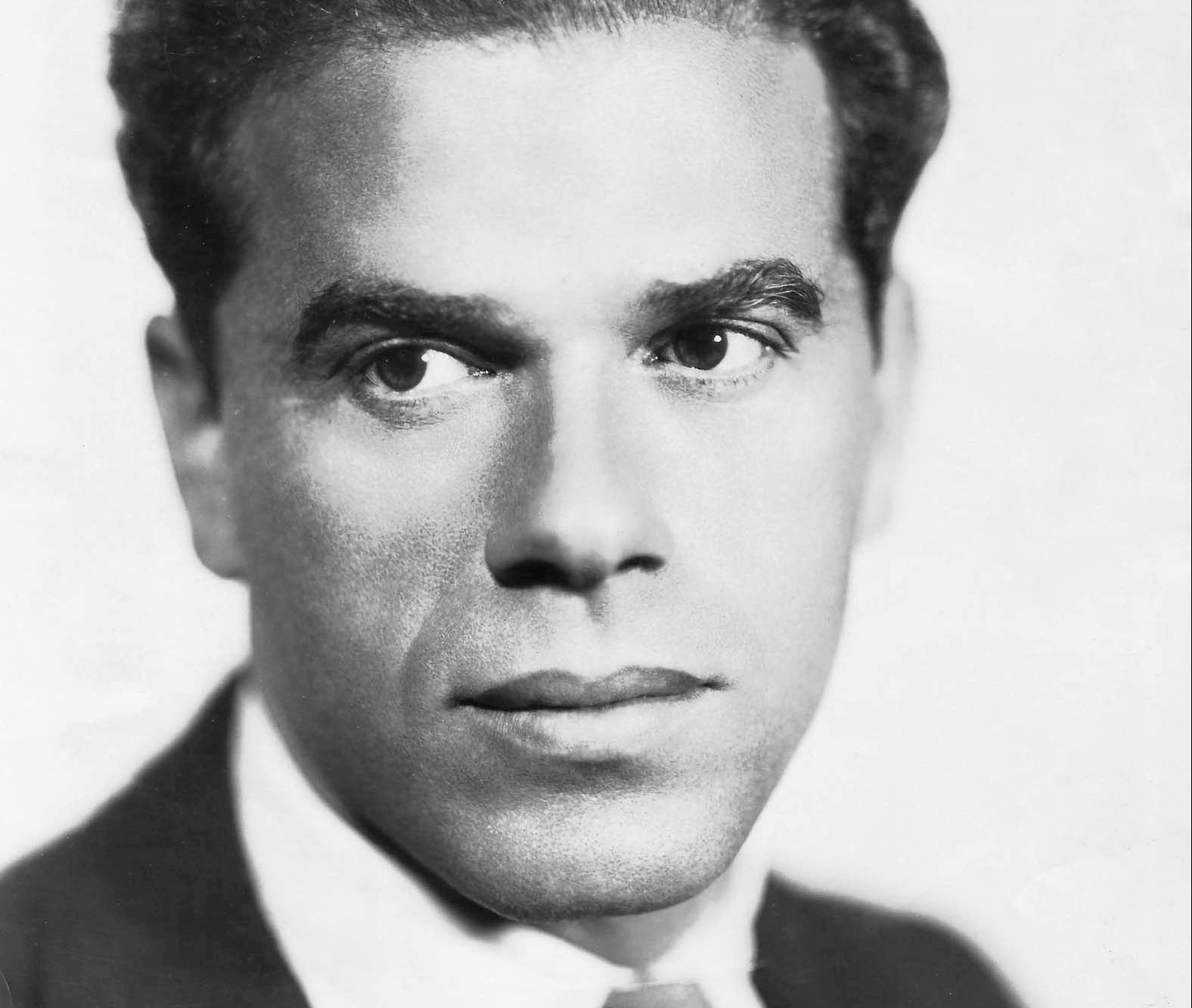Frank Capra is often acknowledged as one of the greatest directors who ever lived. Not just that, but he helped building the film industry as we know it. At one point he served as President of the Academy of Motion Pictures Arts and Sciences, as head of the Directors Guild of America, and he was strongly involved with the Screenwriters Guild as well. He didn’t just leave a foot stamp in the history of Cinema, he is the history of Cinema. Capra worked hard to achieve his goals, to fulfill his American dream to the point that, through his works and his life, he became the embodiment of the American dream. Capra was born in Bisacquino, Sicily, a village near Palermo.
His real name was Francesco Rosario Capra. In 1903, when he was five, Capra immigrated to the United States with his family, and it was exactly like those images of Italian ancestors often seen in documentaries or in the tour of Ellis Island. In fact for a small child like Capra traveling in the lower deck of the boat, where the cargo was stored, was a traumatic experience that translated into a conflictual relationship with his heritage.
His family left to seek a better life in America, his father’s famous words reported in several biographies when the boat finally approached the Statue of Liberty were, “Ciccio, look! Look at that! That’s the greatest light since the star of Bethlehem! That’s the light of freedom! Remember that. Freedom.” Frank never forgot those words. He was the youngest of seven children and the family settled in Los Angeles where his older brother Benjamin had previously moved to. They lived in the area of East Los Angeles known today as Chinatown, at the time reserved to Italian immigrants. The Chinese slowly ate up the area over the years just like it’s been happening to Little Italy in New York City.
Frank’s father worked as a fruit picker and young Frank sold newspapers after school. He wasn’t entirely happy of living in what he called the “Italian ghetto”, but that gave him a certain cockiness that proved useful later in his life. Capra pursued a college degree after graduating against his parents’ desire who wanted him to work like all his other siblings. It was a time when everybody had to do their part to support the family. Getting an education was the first step into the American dream he strongly wanted to partake in. When World War I broke he enlisted in the Army, despite not being a naturalized citizen yet (he would adjust his status in 1920). This led him for the first time to San Francisco where he taught mathematics to artillerymen; his studies in chemical engineering at the California Institute of Technology paying off. After being discharged for having contracted the Spanish influenza he went back home where he became increasingly depressed, seeing that, even after he recovered, all his siblings had steady jobs but he couldn’t keep one. He moved back to San Francisco where he made a short documentary entitled La Visita Dell’Incrociatore Italiano LIBYA a San Francisco.
The film documented the arrival of the Italian naval vessel and the reception given to the sea crew by San Francisco’s Italia Virtus Club. The Bay Area town proved to be very good to young Frank. When he heard that a new film studio was about to open he sold himself as somebody with a lot of experience, coming from Los Angeles. He was hired to direct a one-reel silent film and that became his proverbial foot in the door. He then diligently learned his craft and started making connections (producer Harry Cohn, comedian Harry Langdon) which eventually brought him back to Hollywood. That was about the time when sound came to film. Not everybody was keen to welcome the so called talkies, but Capra, being an engineer, fully embraced it and made the fortune of Columbia Pictures Studios, which wasn’t one of today’s big six yet. In the years that followed, between the 1930s and 1940s, Capra directed several Academy Award winning films, collecting three Oscars himself.
His trademark was stories about rags-to-riches, which started with The Younger Generation. That film told the story of a social-climbing Jewish man who ends up denying his humble roots in order to keep his status with the elite. Critics were quick to point out the parallelism between the movie and Frank’s own life story and relationship with his ethnic background. Capra firmly denied those insinuations. In retrospect it’s important to note that despite Capra’s efforts to step away from his origins in order to achieve success in life, his relentlessness, his confidence in being resourceful was really part of his Italian blood, had he admitted or not. A few years later he directed It Happened One Night, which went to become the first movie to win all five major Academy Awards: best film, director, screenplay, actor and actress. It was written by Robert Riskin, with whom Capra collaborated extensively, turning into one of the most successful writer-director team. The movies that followed, such as Mr Deeds Goes to Town and Mr. Smith Goes to Washington, put the basis for his “fantasy of goodwill”; the moral Capra started to infuse in his work that a man with a good heart could rise above everything.
The message greatly resonated with a country devastated by the Great Depression. What would come to a surprise to many is that his most celebrated film, It’s a Wonderful Life, which can be read as a sum of all the themes of his movies, optimism, faith, patriotism, sentimentality, was a failure at the time it came out. It’s a Wonderful Life glorified the importance of every human being, and reflected Capra’s belief that no man should consider his life meaningless as long as he had friends. But the public’s mood was changing. World War II had ended and the nation was coming out of the Great Depression; the times when people looked for escapism and inspiration at the movies were disappearing. It still managed to get five nominations at the Oscars, losing to The Best Years of Our Lives, but it took years before it would become the classic that it is today. Capra died in La Quinta, California in 1991, of a heart attack in his sleep at the age of 94.
This year marks the 24th anniversary of his death. We salute a man who came from the Old Country as a child and with his invincible Italian spirit helped shaping the film industry and contributed immensely to the American history.






























